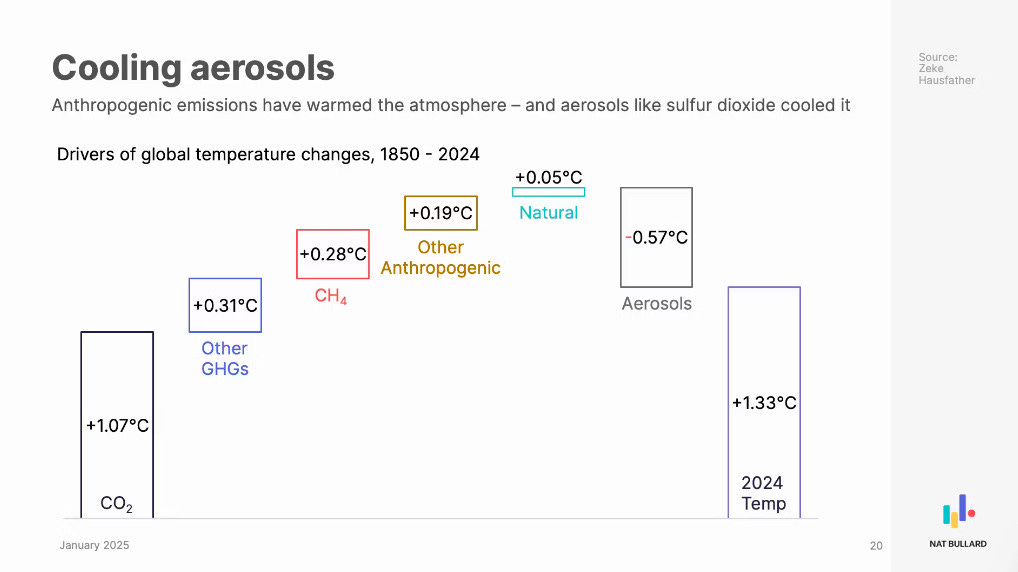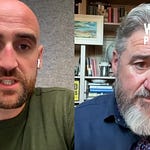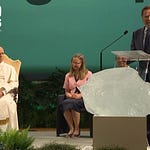I’m not sleeping too well at the moment. My current wine/blood/caffeine ratio is not sustainable. Yeats’ over-quoted “Second Coming” feels like a cheery pep talk. The “Doomsday Clock” of the Bulletin of Atomic Scientists has been set at 89 seconds to midnight. But I was raised to believe despair is a sin, so while I’m going to just do what it takes to get through this week, and the next one, and the next one, I also reserve the right to just take a moment to appreciate the absurdity of this horror show.
So today’s outro track we’ve tried to adjust down the volume. But it’s Iron Maiden’s 2 Minutes to Midnight. Who knew that’d be too optimistic for 2025?
Late last year we started interviewing folk in the business of solar radiation management (SRM) - aka one flavour of “geoengineering”. It’s a taboo subject. It’s sci-fi gold. It’s also something we’re going to be talking about. Particularly after famed climate scientist James Hansen and a platoon of other climate scientists published a new paper declaring not just the Paris Agreement goal of limiting warming to 1.5C to be in the rear-view mirror, but - as Damian Carrington in the Guardian summed it up: “The new analysis said global heating is likely to reach 2C by 2045, unless solar geoengineering is deployed.”
The reason for a lot of this acceleration in global heating, say Hansen and colleagues, is (perversely) the result of successful efforts to reduce pollution. Specifically, removing sulfur from maritime fuel. That sulfur has been causing potentially millions of deaths a year due to respiratory diseases. So it’s being phased out. Only one problem - the sulfur was having the under-appreciated consequence of reflecting quite a lot of sunlight back into space. How much? More than the entire energy output of humanity in a given year. And now that it’s been removed, enough to - according to the paper - drive half the acceleration in global heating over the past 5 years or so.
Hansen is hardly fringe for picking this up, though people don’t all agree on the significance. Zeke Hausfather, who was not involved in the research, is among climate scientist who has acknowledge this “aerosol forcing” problem. Some data of his turned up in Nat Bullard’s superb annual climate deck:
On the call releasing their findings, Hansen et al discussed SRM. Which (even more perversely) often involves ideas for putting sulfur dioxide back into the atmosphere. But on purpose. To cool things off. To buy time.
So here is part one of a series of conversations about SRM, featuring Kelly Wanser - the head of Silver Lining, one of the leading non-batshit-crazy outfits trying to do research on technologies that might make it possible. We’ll put out part two very soon.
Some folk, like Justin Guay from Quadrature Climate Foundation, weren’t necessarily happy about it, but suspect SRM is going to be more in the discourse.
Others, like previous guest Ketan Joshi, were less impressed with the whole trajectory of the conversation:
So, fully aware not everyone will be super-excited we’re spending time on this topic, the risk vs risk of not talking about it seems less of a good idea today.
Outro Tracks
Hey. Why should the Devil have all the best tunes?
00:00 Introduction to the Climate Crisis
00:28 The Doomsday Clock and Climate Realities
01:57 Hansen's Climate Predictions
02:55 Aerosol Forcing and Global Warming
05:10 Purposeful Global Cooling
08:04 Interview with Kelly Wanser
11:07 Silver Linings' Mission and Climate Interventions
23:19 Challenges and Ethical Questions
31:32 Introduction to Luke Eisman and Make Sunsets
31:50 Neal Stephenson's Influence and Geoengineering Concept
32:45 Luke Eisman's DIY Approach to Geoengineering
34:05 Critique of Non-Expert Interventions
35:10 Challenges in Atmospheric Science
37:51 Responsible Research and Global Perspectives
40:10 The Importance of Atmospheric Monitoring
47:56 Global South and Climate Risk Research 5
2:55 The Montreal Protocol and Climate Agreements
54:54 Final Thoughts and Recommendations


















